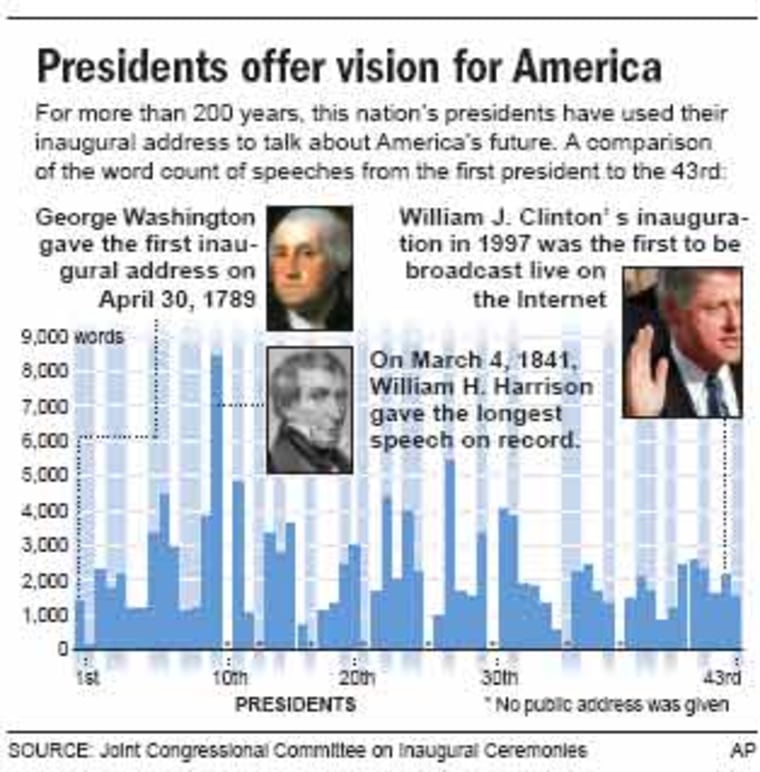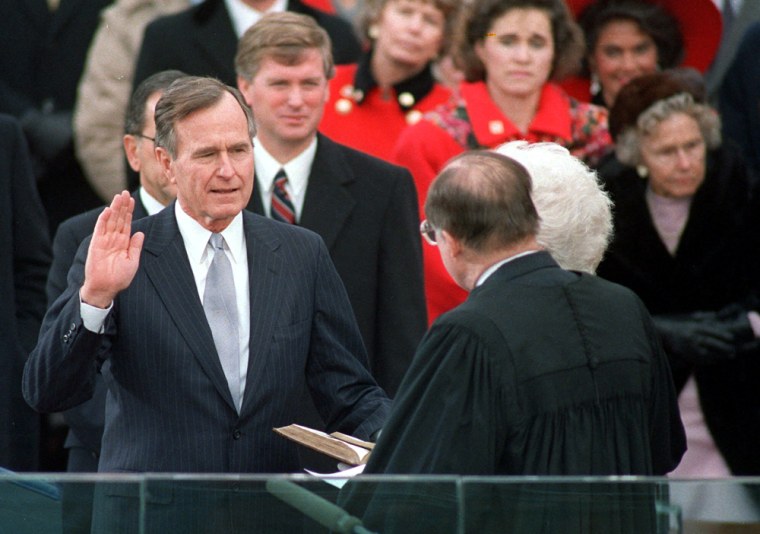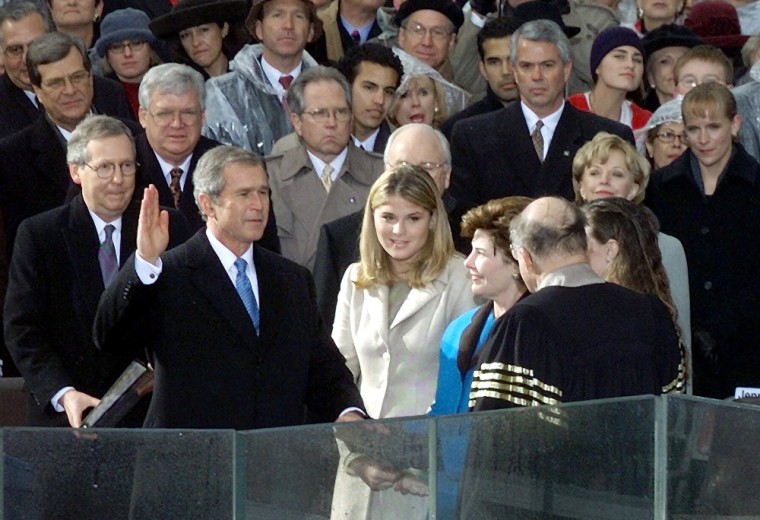When President Bush takes his second oath of office Jan. 20 it will be his family’s fifth inauguration ceremony, a day of pomp and pageantry set amid the icons of democracy only this city can provide: the U.S. Capitol, the White House, Pennsylvania Avenue.
Security will be extraordinary — it’s the first presidential inauguration since the Sept. 11, 2001 terror attacks, and the nation is under a continuing threat by Osama bin Laden’s al-Qaida organization.
But that is not expected to alter the elaborate rituals by which the nation installs its president. For Bush’s second inauguration, those rituals provide a regal subtext, the crown jewel in the Bush political dynasty: His father, George H. W. Bush, was inaugurated twice as vice president, in 1981 and 1985, and once as president, in 1989.
With 21-gun salutes, fancy-dress balls and tighter-than-ever security, the day will resemble nothing so much as a coronation.
‘Traditions that encourage stability’
“We don’t have the unifying effect of a king or queen. As a result, over the centuries America has developed traditions that encourage stability and public confidence. That’s what an inauguration is,” said Larry Sabato, director of the Center for Politics at the University of Virginia.
Among those traditions are: a preinaugural church service for the incoming president and first lady, a congressional escort to the Capitol for the public swearing-in, a presidential inaugural address that sets forth a vision for the new term, a luncheon in the Capitol’s famed Statuary Hall and a 1.7-mile procession along Pennsylvania Avenue to the White House before a massive, cheering crowd.

With U.S. soldiers fighting in Iraq, the inauguration is expected to be filled with patriotic symbols — a Capitol festooned in red, white and blue; prayers for those overseas; military salutes underscoring the fact that the president is the commander-in-chief.
But there’ll be nothing low key about the day — as was the case, for example, in 1945 when a war-weary Franklin D. Roosevelt was sworn in for his fourth term in a simple ceremony on the White House’s South portico.
Just the opposite, in fact.
“This is where we all come together to show our support for our country and our form of government,” said Sen. Trent Lott, R-Miss., who chairs the congressional committee that is coordinating the inaugural plans with White House Chief of Staff Andy Card.
War is backdrop to celebration
The Bushes, said Steve Hess, senior fellow at the Brookings Institution, will “have to be very cautious to make sure nothing is perceived as in bad taste because there are Americans in harm’s way. It will be a celebration of bringing democracy and freedom to other people.”
Accordingly, what Americans will see, whether they manage to secure scarce inauguration tickets from their congressman or senator or watch the events on television and the Internet, is a day of traditions and protocols, some dating from George Washington’s swearing-in as the first president in 1789.
Bush will first attend a morning church service with his wife, Laura, at St. John’s Episcopal Church, on the other side of Lafayette Park from the White House, a tradition started by the Roosevelts in 1933.

Congressional leaders will then accompany the president to the Capitol for the noon swearing-in. Traditionally, the chief justice of the Supreme Court administers the oath of office. Chief Justice William Rehnquist has done this for every president since the first President Bush’s 1989 inauguration, but Rehnquist is being treated for thyroid cancer and it’s not yet known whether he will be up to this duty.
The Homeland Security Department has designated the inauguration a national security special event, which makes the day’s high-profile gatherings eligible for federal money and heightened security overseen by the Secret Service.
“There will be more security for this inauguration than ever before,” said Donald A. Ritchie, associate Senate historian.
Scene of swearing-in has shifted
The location of the swearing-in has changed over the years; Washington’s ceremony took place in New York City, then the nation’s capital. After the city of Washington assumed that title, inaugural ceremonies usually took place on the U.S. Capitol’s East front, the building’s original formal entrance.
Beginning with Ronald Reagan’s 1985 inauguration, the ceremony was moved to the Capitol’s West front, which could accommodate more spectators and television cameras and which looks out over a grand view — the National Mall, reflecting pool and Washington Monument. Construction of the inaugural platform on the Capitol’s West front terrace started in October.
Bush’s inaugural address doubtless won’t be as short as Washington’s second inaugural speech in 1793, which was a mere 133 words. Lott, who talked with Bush about the inauguration on Tuesday, says he’s expecting the president’s speech to be “visionary” and to set forth “the broader theme of what he and we want for our country and for our children.”
Presidential attire for inauguration day is typically conservative — notwithstanding Washington’s steel-hilted sword, white silk stockings and silver shoe buckles. Bush wore a dark business suit in 2001, as did his father in 1989.
Dolley Madison hosted first inaugural ball
The tradition of the inaugural ball began in 1809, when first lady Dolley Madison hosted a gala for 400 people, a scale vastly eclipsed by today’s elaborate balls, planned by a presidential inauguration committee and often funded by corporate sponsors and ticket sales.
President Carter attempted to strip the balls of their glitz and glamour in 1977, calling them parties and charging no more than $25 each, but by 1989, when George H. W. Bush became president, the number of balls hit 11. In 2001, some 50,000 well-wishers attended eight inaugural balls, including the colorful Black Tie and Boots ball celebrating Bush’s home state of Texas.
